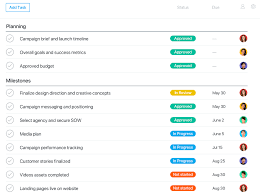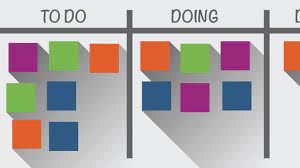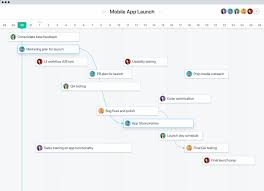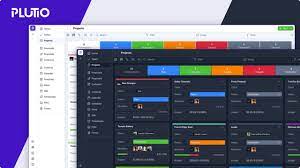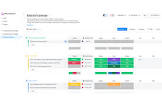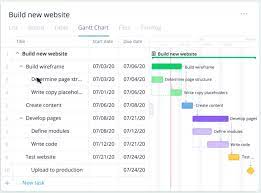Unlocking Efficiency: Harnessing the Power of Open Source Project Management Software
Exploring the Benefits of Open Source Project Management Software
In today’s fast-paced business environment, effective project management is crucial for the success of any organisation. With the rise of open-source project management software, teams now have access to powerful tools that can help streamline workflows, enhance collaboration, and boost productivity.
What is Open Source Project Management Software?
Open source project management software is a type of tool that is developed and maintained by a community of developers who make the source code freely available for anyone to use, modify, and distribute. This means that organisations can customise the software to suit their specific needs without being tied to proprietary solutions.
The Benefits of Open Source Project Management Software
Cost-Effective: One of the primary advantages of open source project management software is that it is typically free to use. This can result in significant cost savings for organisations, especially those with limited budgets.
Flexibility and Customisation: Open source software allows teams to tailor the tool to their unique requirements. Whether it’s adding new features, integrating with other systems, or creating custom reports, the flexibility offered by open source solutions is unparalleled.
Community Support: Open source projects benefit from a large community of developers who contribute code, provide support, and offer guidance. This means that users can tap into a wealth of knowledge and expertise when using open source project management software.
Security and Transparency: With open source software, users have full visibility into the source code, which enhances security and transparency. Organisations can review the code for vulnerabilities, audit security practices, and ensure data privacy compliance.
Popular Open Source Project Management Tools
- OpenProject: A collaborative project management tool with features such as task tracking, Gantt charts, and agile boards.
- Redmine: A flexible project management web application that offers issue tracking, time tracking, and repository integration.
- Taiga: An intuitive agile project management tool with kanban boards, sprint planning, and backlog management.
- ProjectLibre: An open-source alternative to Microsoft Project with features for resource allocation and critical path analysis.
In Conclusion
Open source project management software offers organisations a cost-effective, flexible, and secure solution for managing projects effectively. By leveraging the benefits of open source tools, teams can collaborate more efficiently, deliver projects on time and within budget, and achieve greater success in today’s competitive business landscape.
Top 5 Tips for Effectively Managing Open Source Project Management Software
- Choose a reputable open source project management software with a strong community for support and updates.
- Ensure the software is compatible with your existing systems and can be easily integrated into your workflow.
- Regularly update the software to benefit from new features, security patches, and bug fixes.
- Train your team on how to effectively use the project management software to maximise its potential.
- Encourage collaboration and communication among team members through the software to improve productivity.
Choose a reputable open source project management software with a strong community for support and updates.
When selecting open source project management software, it is essential to opt for a reputable option that boasts a robust community for ongoing support and updates. By choosing a software with a strong community backing, users can benefit from timely assistance, valuable insights, and regular updates that enhance the functionality and security of the tool. A thriving community ensures that users have access to a wealth of resources and expertise, making it easier to navigate any challenges and maximise the potential of the project management software.
Ensure the software is compatible with your existing systems and can be easily integrated into your workflow.
When considering open source project management software, it is crucial to ensure that the chosen tool is compatible with your existing systems and can seamlessly integrate into your workflow. Compatibility and ease of integration are key factors in maximising the efficiency and effectiveness of project management processes. By selecting software that works harmoniously with your current infrastructure and workflow, you can streamline operations, enhance collaboration, and ensure a smooth transition to a new project management solution.
Regularly update the software to benefit from new features, security patches, and bug fixes.
To maximise the advantages of open source project management software, it is essential to maintain regular updates. By keeping the software up-to-date, users can access new features that enhance functionality, security patches that protect against vulnerabilities, and bug fixes that improve overall performance. Regular updates not only ensure a smoother user experience but also contribute to the longevity and reliability of the software, empowering teams to work efficiently and securely towards project success.
Train your team on how to effectively use the project management software to maximise its potential.
To fully harness the benefits of open source project management software, it is essential to train your team on how to effectively utilise the tool. By providing comprehensive training sessions, team members can familiarise themselves with the software’s features and functionalities, enabling them to maximise its potential in streamlining workflows, enhancing collaboration, and improving project outcomes. Investing time and resources in training will empower your team to work more efficiently and effectively, ultimately leading to greater success in project execution and delivery.
Encourage collaboration and communication among team members through the software to improve productivity.
Encouraging collaboration and fostering open communication among team members through the use of open source project management software can significantly enhance productivity within an organisation. By providing a platform for team members to share ideas, updates, and feedback in real-time, the software creates a collaborative environment that promotes transparency and efficiency. This approach not only streamlines workflows but also ensures that all team members are on the same page, leading to better coordination, increased productivity, and ultimately, successful project outcomes.




